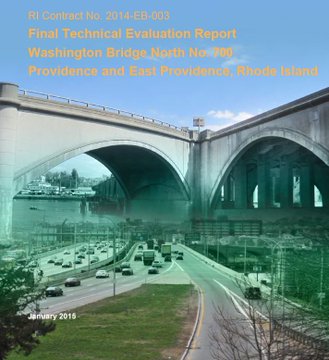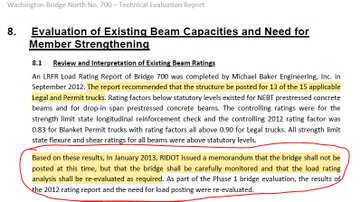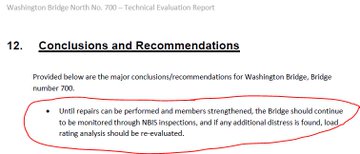The smoking gun
It was only a matter of time. After many made numerous attempts to obtain documents from the Rhode Island DOT through open records requests, the truth has finally been unearthed.
The Washington Bridge Technical Evaluation, officially published by AECOM in early 2015 but compiled over a span of many months, if not years, contains undeniable evidence that the RI DOT was aware of the compromised state of the Washington Bridge long ago.
The DOT commissioned this comprehensive report to determine what work was needed to rehabilitate the bridge. Consider this document the road map for the contract to fix the bridge.
AECOM refers to a 2012 (!!!) report that evaluated the bridge’s load-carrying capabilities. “The report recommended that the structure be posted for 13 of the 15 applicable Legal and Permit trucks.” In simpler terms, this would mean a ban on most large trucks from using the bridge, a crucial safety measure intended to protect both the public and the bridge.
In the very next paragraph, AECOM states, “Based on these results, in January 2013, RIDOT issued a memorandum that the bridge shall not be posted at this time, but that the bridge shall be carefully monitored and that the load rating analysis shall be re‐evaluated as required.” In other words, the DOT’s response to being told that heavy trucks were dangerous to allow on the bridge was to shrug their shoulders and say, “Whatever.”
Think about it. The DOT’s trusted engineering contractor said, “Ban the trucks.” The DOT did not listen and instead allowed heavy vehicles to cross an unsafe span, which certainly accelerated the bridge’s deterioration. To top this off, in the summary, AECOM says this: “Until repairs can be performed and members strengthened, the Bridge should continue to be monitored through NBIS inspections, and if any additional distress is found, load rating analysis should be re‐evaluated.” This means that any further deterioration of the bridge would require a reassessment to determine what additional traffic should be banned from the bridge. There you have it.
The RI DOT *KNEW* in 2012 that the bridge was sufficiently screwed that heavy vehicles should be banned. More than a decade later, the necessary repairs had still not been made to the bridge, and heavy vehicles had not been banned from the span.
How dare DOT Director Alviti claim that the catastrophic failure of this bridge was a surprise. The alarms of concern were raised as early as 2012, and I have to believe additional evidence exists that shows the DOT received this warning in subsequent years as well. The DOT has been stingy with the release of information, and this document clearly explains why.
According to the report, the projected cost to fully repair the bridge and make it safe for all was less than $8 million.
Where is the accountability? Don’t make us wait.
 𝕂𝕖𝕟 𝔹𝕝𝕠𝕔𝕜 @KenBlockRI
𝕂𝕖𝕟 𝔹𝕝𝕠𝕔𝕜 @KenBlockRI




